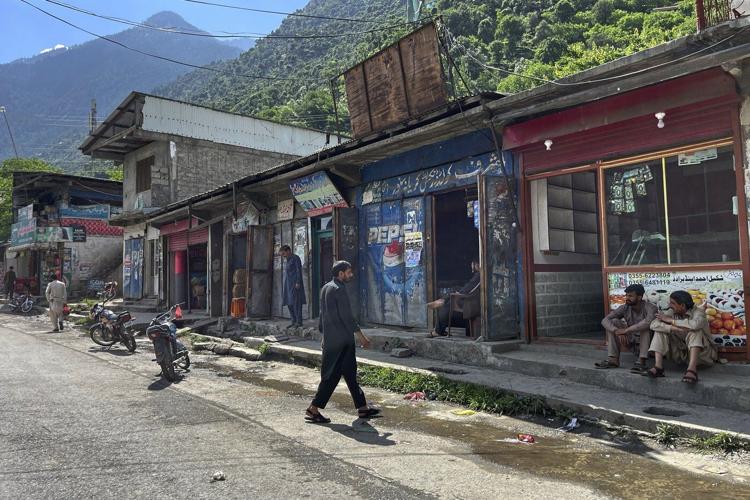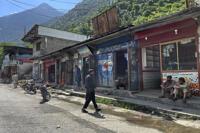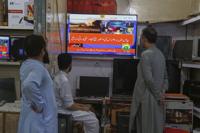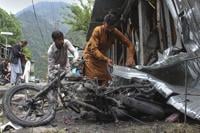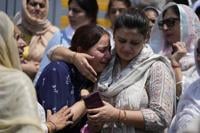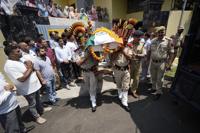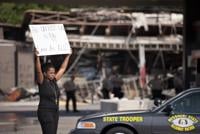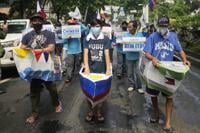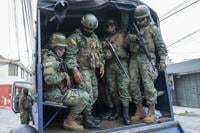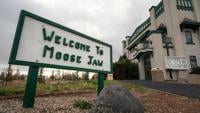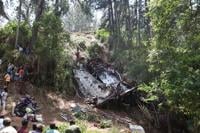NEELUM VALLEY, Pakistan (AP) — Joy about an India-Pakistan ceasefire was short-lived in Kashmir.
Tens of thousands fled the last week amid heavy shelling and drone attacks by Pakistan. Yet despite a ceasefire announced Saturday, only a handful of families returned to their homes Sunday.
“We will go back only after complete calm prevails,” said Basharat Ahmed, who lives in district. “It doesn’t take much time for the two countries to start fighting on the border.”
The ceasefire was intended to halt the hostilities between the nuclear-armed neighbors and defuse between them for decades. But just hours later, each side accused the other of .
Indian officials said Pakistani shelling since Wednesday had killed at least 23 people and injured scores more. The shelling also damaged or destroyed hundreds of residential buildings.
A man and his family in Indian-controlled Kashmir had taken shelter in a government-run college in the town of Baramulla. When they left early Sunday, soldiers at a checkpoint stopped them, without giving a reason, before they could reach home in the Uri area of Poonch.
“Our joy around the ceasefire just vanished,” said Bashir Ahmed. He and his family had to return to the shelter at the college.
Indian and Pakistani soldiers each guard their side of the frontier. There are watch towers every few hundred meters (yards). Some Indian and Pakistani troops are so close they can wave to one another.
in Kashmir last month plunged India-Pakistan relations to new lows. India accused its neighbor of backing the massacre, in which 26 men, were killed — a charge Pakistan denies.
Both countries subsequently expelled the other's diplomats and nationals, and shut borders and airspace. There were missile strikes, drone attacks, and heavy artillery fire in the days that followed.
On Sunday, India said its missile strikes into Pakistani territory last week killed at least 100 militants, including prominent leaders.
People near both sides of the border pay the price
Across the border that divides Kashmir, people feared Indian attacks would flatten their villages.
They began returning after the deal was announced, only to see their houses and businesses wrecked, uninhabitable or unsafe, and their belongings ruined. People are unsure if the ceasefire will hold and who will help them rebuild their lives.
Abdul Shakoor, from Chinari in Pakistan-controlled Kashmir, ran for his life on Wednesday.
He and his family escaped through fields and walked almost 10 kilometers (6 miles) to take shelter at a relative’s house.
“Many people in other cities who support war don’t realize who suffers the most when conflict breaks out or when two armies exchange fire,” said Shakoor. “It’s the people living near the border who pay the highest price.”
Although the ceasefire had brought people “immense relief,” he wanted both countries to talk to each other. “In the end, even after war, it all comes back to dialogue.”
Nestled among the lush green landscape of the lay dusty mounds of debris and rubble. The scenic spot a few kilometers from the Line of Control makes it vulnerable when tensions spike or there are cross-border skirmishes.
The valley runs along the Neelum River and, in some places, the border posts of both Pakistan and India are visible.
Last Friday night, as soon as the warning sirens started wailing, Fatima Bibi rushed into a bunker with her family.
“It was a terrifying night,” said Bibi. “Both sides were firing at each other’s posts. We heard nonstop explosions, and there was a deafening blast as shells started landing in our village." A small shell landed in the courtyard of her home, damaging the windows and walls.
She was thankful for the ceasefire. “Given how tense things had become, many people could have died if a war had broken out.”
___
Aijaz Hussain reported from Srinagar, India. AP writer Roshan Mughal contributed to this report from Muzaffarabad, Pakistan

